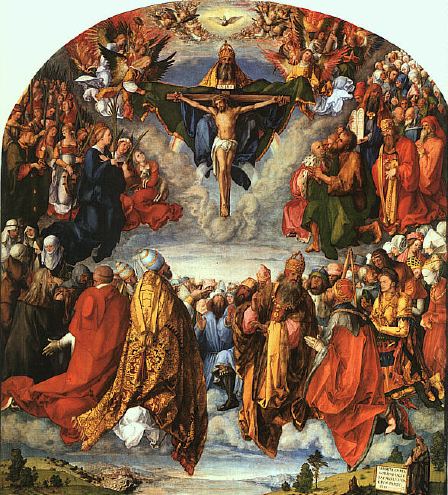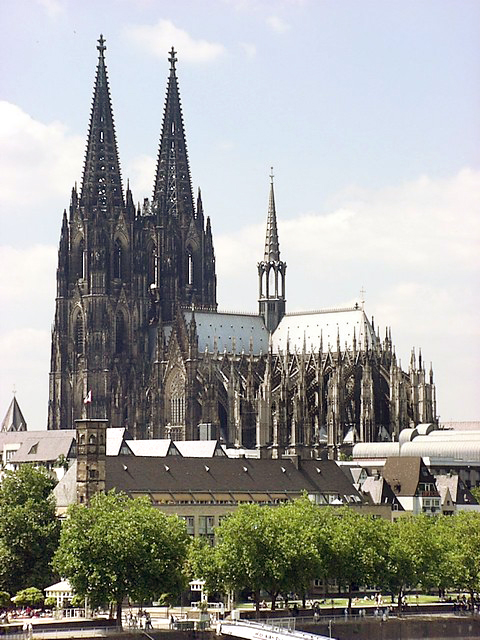 The Crux: Creation and Incarnation
The Crux: Creation and Incarnation
Is there a way to summarize the negative effects of our modern “immediatism gone to seed,” and the medieval balm that could be applied to heal our self-inflicted wounds? Many ways, no doubt, but I keep coming back to the doctrines of the Creation and the Incarnation – their eclipse in the modern scientific age and their potential recovery through clear-eyed and open-hearted engagement with medieval wisdom.
I believe (and Lewis observed) that the scientific revolution and its sequels—the Enlightenment—began to sap the material world of its spiritual and moral significance, and that this diminishment has only continued and intensified up to today. Lewis put the decisive “break point” just after the heyday of Jane Austen (1775 – 1817),[1] a turning point whose catastrophic effects he had already limned in his argument “The Abolition of Man” (1943) and its novelistic outworking That Hideous Strength (1945). But whenever it happened, a crucial effect of the universe’s modern disenchantment has been that we no longer recognize the spiritual importance of either Creation (God making all flesh) or Incarnation (God becoming flesh).
Gregory the Great, spiritual father of the Middle Ages, whose writings piled the cupboards of the great monastic libraries,[2] insisted that while pastors or lay people are engaged in the active life, everything in their experience and in the world becomes potentially an instrument of God’s direct, special communication to them. Chance meetings. Storms. Landscapes. Crafted objects. A thousand other things. He is always speaking to us, if we but have ears to hear and eyes to see. Gregory emphasized “God’s involvement with creation and the sacramental presence of spiritual truths in the things of this world.”[3]
This sense of God at work in the material world and in our own embodied, material, social and cultural experience became part of the orthodox Christian understanding of the world for the whole period from Gregory to the Reformation and, in many circles, both before and after this period. This was not pantheism, but rather the sense both of God’s glory reflected in Creation and God’s grace working through ordinary things in Creation.
Since after the Scientific Revolution, science, in the argument of Lewis’s Discarded Image, sapped the material world—indeed the solar system and beyond—of all life and mystery, including the life of God and the mystery of redemption. As a result, humankind has found it a dull fact worthy of little interest that the supreme God over all the universe came in the flesh of a human being, entering into the world(s) he had made. All the rich resonances of Incarnation and all the glories and intricacies of human life within Creation were left for the irrelevant musings of oddball romantic poets such as Gerard Manley Hopkins.
The world, of course, did not stop being charged with the grandeur of God. It did not stop flaming out like shining from shook foil. But only the poets and the mystics noticed anymore.
The medievals, on the other hand, had seen God reflected and actively at work in every aspect of the created world. Theirs was “a world of built-in significance.”[4] What would a medieval person looking up at the night sky actually see? To become that ancient night watcher, says Lewis, “you must conceive yourself looking up at a world lighted, warmed, and resonant with music.” The medieval cosmos was one of vibrancy and wonder. In his Out of the Silent Planet, Lewis has his protagonist Ransom peer out of the window of a spaceship to see, not the black void of space, but a pulsing, glowing matrix of glory. This is the medieval cosmos, in which “Each sphere . . . is a conscious and intellectual being, moved by ‘intellectual love’ of God,” transposed into science fiction.
Medieval poets and artists dwelt on the particularities of the material world because those particularities made them feel the fitness and rightness of all things. It was the strength of that medieval worldview, says Lewis in his Sixteenth-Century Literature, to think always and at the same time in both the universal and the particular. Medievals oscillated in their thinking and talking between boots and angels, pigs and prophecy, with stunning rapidity and naturalness.
Lewis found himself living in a modern age of philosophical materialism, in which everything is just atoms. In such a world, all the spiritual meaning and significance inherent in the medieval model have been drained away. Yet, he admitted, “I have made no serious effort to hide the fact that the old Model delights me as I believe it delighted our ancestors. Few constructions of the imagination seem to me to have combined splendour, sobriety, and coherence in the same degree.”[5] To which the response of many modern commentators is: “How medieval!” That is, how quaint. How mystical. How wrong.
Did such mystical understanding of the cosmos reduce God to some sort of magician, meddling in material stuff to gain cheap effects among his human audience? Did it encourage rank “superstition”—which is a modern term for attributing to spiritual origins anything we still don’t understand? That’s certainly the understanding of many moderns faced with the “discarded image” of the Middle Ages.
[1] Lewis posited the importance of this moment of separation from the Great Western Tradition in his inaugural address as Chair of Medieval and Renaissance Literature at Cambridge University, “De Descriptione Temporum” (1954; https://archive.org/stream/DeDescriptioneTemporum/DeDescriptioneTemporumByC.S.Lewis_djvu.txt).
[2] More, Bernard McGinn tells us, than those of any other post-biblical author.
[3] Carole Straw, Gregory the Great: Perfection in Imperfection, 50.
[4] C. S. Lewis, The Discarded Image, 204.
[5] C S Lewis, The Discarded Image, 216.

 Medieval Wisdom for Modern Christians
Medieval Wisdom for Modern Christians







Reblogged this on Debrymothership's Blog.